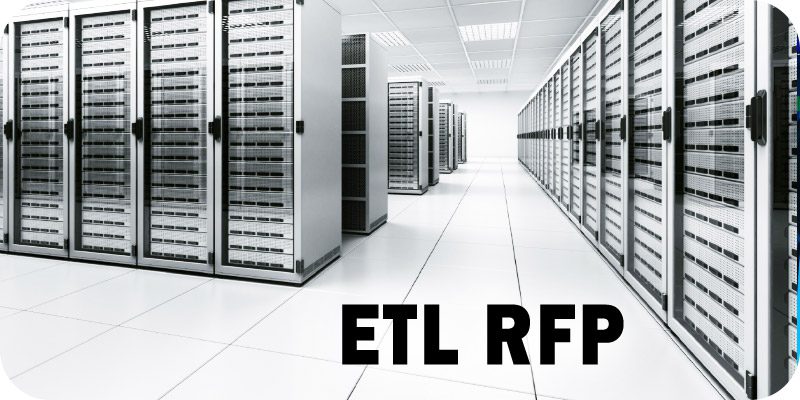An Example ETL RFP Template from Solutions Review


Solutions Review editors compiled this example data engineering RFP template to help your organization select the best enterprise software.
Extract, Transform, Load (ETL) is a process used to extract data from various sources, transform it to meet specific requirements, and load it into a target system. When seeking ETL solutions, enterprise leaders should consider creating a Request for Proposal (RFP) to identify vendors that can meet their needs.
The first step in creating an RFP for ETL solutions is to define the business’s goals and objectives. This may include enhancing the accuracy and speed of data integration, improving the quality of data, or optimizing the integration and customization of ETL capabilities. With these goals in mind, businesses can identify their specific ETL needs and requirements.
Once the business’s needs have been identified, the RFP should include a detailed description of the project scope, timeline, and budget. This information will help potential vendors understand the project’s parameters and determine whether they are capable of meeting the business’s requirements. In addition, the RFP should also include specific evaluation criteria that will be used to assess vendor proposals, such as technical expertise, experience, and pricing.
ETL RFP Template
Another important consideration when creating an RFP is to ensure that it includes clear and concise instructions for vendors on how to respond to the proposal. This may include providing a detailed project plan, outlining the methodology and tools that will be used, and describing any potential risks or challenges that may arise during the project. Vendors should also be provided with a list of references and case studies to demonstrate their experience and expertise in the field.
In addition to technical requirements, the RFP should also outline any legal or regulatory requirements that vendors must comply with, such as data privacy regulations or industry-specific standards. Businesses should also consider including a Service Level Agreement (SLA) that specifies the level of service and support that vendors will provide throughout the project.
Businesses should consider including a section in the RFP that addresses potential issues that may arise during the project, such as delays, cost overruns, or scope changes. This section should outline the process for managing these issues and should include a clear communication plan for keeping all stakeholders informed and up-to-date on project progress.
An RFP can be a powerful tool for enterprises seeking ETL solutions. By clearly defining their goals and objectives, identifying their specific needs and requirements, and outlining a detailed project plan and budget, businesses can attract qualified vendors who are capable of meeting their needs. Additionally, by including evaluation criteria, legal and regulatory requirements, and a process for managing potential issues, businesses can ensure that the project runs smoothly and efficiently from start to finish.
What Should an RFP Template Include?
An RFP template should include several key sections to ensure that the document is comprehensive and covers all of the necessary information. Here are some of the sections that should be included in an RFP template:
- Introduction: This section should provide an overview of the project and the purpose of the RFP. It should also include instructions for vendors on how to respond to the RFP.
- Project Scope: This section should define the project scope and objectives, as well as any specific requirements or constraints. It should also describe the expected deliverables and timelines.
- Technical Requirements: This section should outline the technical requirements for the project, including any hardware, software, or infrastructure needs. It should also include any data management or security requirements.
- Evaluation Criteria: This section should describe the criteria that will be used to evaluate vendor proposals. This may include factors such as technical expertise, experience, pricing, and customer references.
- Proposal Guidelines: This section should provide instructions for vendors on how to structure their proposals. It should also outline any requirements for submitting a proposal, such as a deadline or format.
- Contract Terms: This section should include the terms and conditions of the contract, including any warranties, service level agreements, or termination clauses.
- Budget: This section should include the budget for the project, including any constraints or limitations.
- Legal and Regulatory Requirements: This section should outline any legal or regulatory requirements that vendors must comply with, such as data privacy regulations or industry-specific standards.
- Project Management: This section should describe the project management approach, including the roles and responsibilities of each party and the communication plan.
- Appendices: This section should include any additional information or supporting documents, such as technical specifications or sample contracts.
An RFP template should be detailed and comprehensive, providing vendors with all of the information they need to submit a complete and competitive proposal. By including these key sections, businesses can ensure that they receive high-quality proposals that meet their needs and requirements.




















